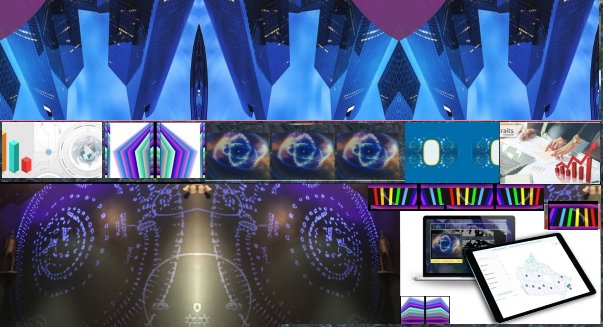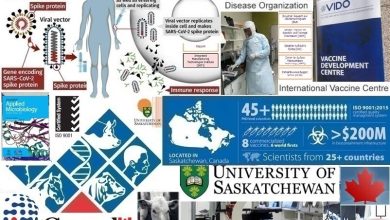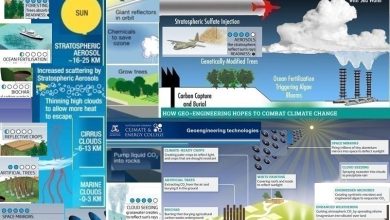
A quantum computer encodes data in quantum bits or qubits of information; to encode a computation qubits can exist in two states at once, allowing for synchronised discovery of all probable answers. To be able to use quantum technology in MRI imaging in such a way that it can apply the principle of qubits to exist in two states at once, such as the spin-up and spin-down state of an electron, would be a breakthrough for the medical profession. Theoretically, this would give quantum computers the power to optimise solutions — on one condition, if the qubits can maintain their consistency without interference from the immediate atmosphere such as surrounding atoms causing havoc to the synchrony of the waves. This is where the theory of quantum entanglement (measurements of physical properties such as polarisation, position, momentum, and spin performed on entangled particles) is involved; it is a physical phenomenon that happens when pairs of particles are created or groups of particles interact in such a way that the quantum state of each particle cannot be described independently. An example of quantum entanglement is when a pair of particles is formed in a manner that the total spin is zero – If one particle has a clockwise spin on a specific axis, the spin of the other particle on the same axis will be counter clockwise. Therefore, the quantum state needs to be expressed as one configuration. Today’s computers (even supercomputers) use bits (not qubits), are unable to apply the phenomenon of quantum entanglement, and therefore cannot express a solution in two states at once. With quantum computers, researchers would be able to do important biological and medicinal research and study all the proteins in plants as well as in the human body.
A quantum Magnetic Resonance Imaging (MRI) machine that allows for the study of single molecule microscopy will enable them to understand biological processes in such a way that it can lead to the discovery of new medications. Quantum sensors will be more responsive and precise than the sensors in use today; these sensors will be able to complete more area-focused and ultra-high-resolution measurements. Quantum sensors in future MRI scanners would have extraordinary diagnostic potentials; these MRI scanners would be able to detect the formation of molecules and proteins, enabling the scanners to ‘visualise’ tumours! The predicament with today’s huge nuclear magnetic resonance (NMR) spectroscopy machine is that the distance from the machine to the sample is far and the machine’s signal is too weak. Due to the weak signal and the distance, the machine has to use strong microwaves and a powerful magnetic field to reach the sample. This is an invasive procedure which can have a negative effect on fragile bio-samples. Another disadvantage is that the machine can only detect a large group of molecules which reduces the accuracy of the result. Until recently, research in the field of nanotechnology has been very limited. While prospects of development in the medical and pharmaceutical professions with quantum and nano technology are still several decades away, these technologies are hypothetically able to authenticate these visions to become a future reality.
Researchers have established that thirty percent of patients that undergo magnetic resonance imaging (MRI) procedures report mild distress during the examination while five to ten percent experience intense panic attacks and even claustrophobia. Such stress stimuli can offset hyperventilation, a condition that causes fast, profound breathing, increased ventilation of the lungs, and the possibility of fainting. It is crucial to identify patients who are prone to anxiety attacks in the MRI unit to avoid psychological distress for the patient, undue staff involvement, and unnecessary use of the machine. Several therapeutic programs have been implemented to teach patients breathing techniques in order to counteract hyperventilation. Although MRI imaging requires multiple scans of a fairly large area that needs to be standardised to produce a single image, it is a non-invasive and reliable diagnostic methods that does not expose the patient to undue discomfort or stress.
The “Development of the ORTHO-LBNP (Lower Body Negative Pressure) technology for research and training of Polish Air Force pilots under conditions of ischemic hypoxia and orthostatic stress” is a project which is financed by the Program for National Defense and Security, Poland. The project was supplied with a grant from the Fund for Polish Science and Technology to purchase a Philips Achieva 1.5 T scanner. Although the Fibre Bragg grating-based sensor method to monitor heart rate (HR) and respiration rate (RR) throughout MRI procedures includes results of research done within the framework of the Polish Air Force LBNP Project, the Fibre Bragg team used the LBNP Project as initiative to perform their Fibre Bragg grating-based experiment. Participants in the study were from the Military Institute of Aviation Medicine (Department of Aviation Bioengineering) and the Military Institute of Aviation Medicine (Technical Department of Aero-medical Research and Flight Simulators). Their method tested a basic sensor design of reliable fibre-optic technology components to non-invasively monitor heart and respiration activity. The signal from the FBG (Fibre Bragg grating)-based sensor is spectrally encoded, protecting it against amplitude distortions. High charges from the electromagnetic (EM) field neither disturbed the functioning of the sensor nor affected the optical signal in the fibre. The metal-free construction allowed for image quality without affecting the patient’s safety. The statistical analysis of the Fibre Bragg method concluded that the sensor is able to accurately confirm the RR and HR traces and that the sensor qualifies for use in the MRI environment. The goal of the FBG method is to maintain the measuring system’s simple design and low cost, to improve its functionality, and to optimise its reliability. Future research will focus on the sensor being used in routine MRI examinations, ultimately expanding the range of topics to research. Respiration Rate Variables (RRV) will be a topic of thorough investigation and methodical analysis in terms of the hyperventilation phenomenon experienced by patients with symptoms of panic attacks during MRI diagnostic procedures.
Nanoscale science (a fairly recent development in the scientific community) is an interdisciplinary science that involves Biology, Chemistry, Computer Science, Engineering, Material Science, Physics, and other areas. It is the study of objects and phenomena at an extremely small scale, allows for the discovery of solutions to problems, and develops new theories and technologies that can ultimately improve people’s lives. The development of nanotechnology is preceded by inventions such as the Scanning Probe Microscope (SPM), the branch of microscopy that uses physical probes to scan the sample and capture surface imagery; the probe is a remarkable development in nuclear magnetic resonance (NMR) technology. The main component of a SPM is a small probe with a very sharp nanoscale tip to interact with the sample. There are several SPMs and it is this tip-sample interaction that tells them apart from each other. A SPM is therefore sample surface observation with a probe to investigate a specimen (rather than with light); this offers an enormous amount of information that cannot be obtained with light microscopy. The atomic resolution of a SPM can solve sub-nanometer characteristics, surpassing even advanced techniques such as transmission electron microscopy (TEM) and scanning electron microscopy (SEM). Researchers at the University of Melbourne, Australia, discovered a method to develop a tiny MRI imaging machine with the use of atomic-scale quantum computer technology. The team, led by Professor Lloyd Hollenberg (Deputy Director of the Centre for Quantum Computation and Communication Technology) used a quantum probe to achieve microwave-free NMR at nanoscale. Professor Hollenberg announced that in addition to being able to now study much smaller samples with NMR spectroscopy (which conventional machines were unable to do) the method does not involve the use of microwave fields that are prone to spoil biological samples. The most important benefit of nanoscale is how particle properties of the same substance differ in nanosize than when they are studied in larger size. Nanoscale processes and systems, as well as those in the human body, are managed by the laws of quantum physics.











